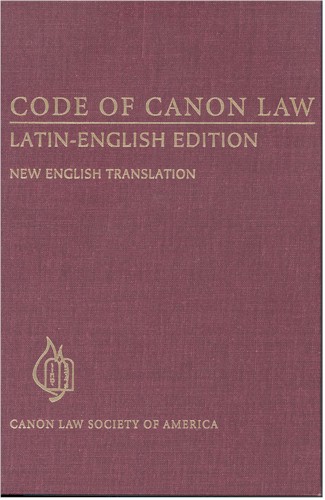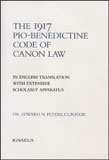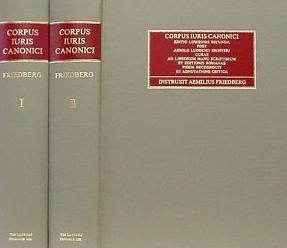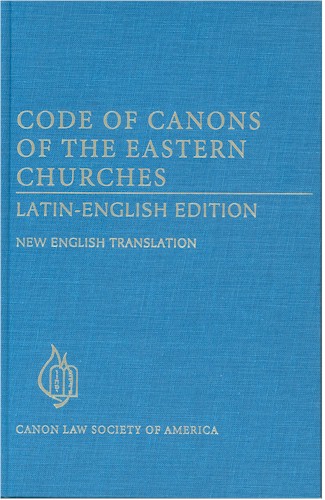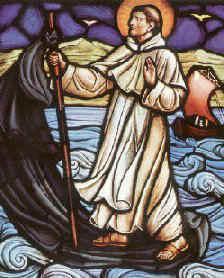|
To work for the proper implementation of canon law is to play an extraordinarily constructive role in continuing the redemptive mission of Christ. Pope John Paul II |
|
|
|
|
Resolution 1152 x 864 |
Updated 3 jan 2013 |
The Next Papal Conclave |
|
Edward Peters, "The next papal conclave: Universi Dominici gregis", This Rock (Oct 1996) 30-31.
Note that under current pontifical law, a two-thirds majority is once again required for valid election to the papacy.
See also List of cardinals currently eligible
|
Pope John Paul II's recent publication of instructions on the conduct of the next papal conclave, the conclave that will elect his successor, inevitably fanned nagging rumors that the 76-year-old pontiff is in failing health. But while such rumors can never be completely put to rest with a man the Pope's age, the promulgation on February 22 (The Feast of the Chair of Peter) of the apostolic constitution Universi Dominici gregis, standing alone, says little about the prospects for its author's longevity. (The English translation, The Lord's Whole Flock, appeared in Origins, March 7, 1996.) Four of the last five popes in this century have felt it useful to issue new decrees on the conclave that would determine their successor, and most of those popes survived by a considerable time the publication of their conclave instructions. John Paul I, of course, in office barely one month in 1978, issued no conclave instructions. Paul VI lived some four years past the release of his document. While it is true that John XXIII survived the issuance of his conclave decree by only one year, Pius XII outlived his instructions by more than twelve years, and Pius XI lived seventeen years past his first conclave instructions and four years past his revised ordinances. Of considerably more significance than the timing of the Pope's conclave instructions, of course, is their content. For the most part, John Paul II has preserved the basic structure of the papal conclave through which, since the 13th century, the College of Cardinals has selected the next Roman pontiff. But in important respects, the tenor of the times and the character of the Polish Pope are reflected in his rules for the meeting. According to Universi, one can look for the funeral of John Paul II to take place within four to six days of his death. No photographs of the dying pontiff nor recordings of his last words will be permitted. Historical photos after his death will be allowed only with special permission, and then only upon condition that the pope is clad in pontifical vestments. Most upper-level Vatican officials will automatically cease from office upon the death of the Pope, and most Vatican dicasteries will attend only to minor matters until a new pontiff is selected. Not less than fifteen days following the Pope's death, nor more than twenty, the College of Cardinals must gather in Rome to begin its electoral work. All the usual prohibitions against pre-election campaigning and bargaining among the "Princes of the Church," as cardinals are sometimes called, have been retained by John Paul II. The actual voting for the new pope will, by custom, take place in the Sistine Chapel under Michelangelo's recently restored frescoes. In addition to the usual strictures against cameras and other recording devices in the chapel, John Paul II has specifically directed that the area be "swept" by technicians for hidden bugging devices as well. Among other innovations introduced by the present Holy Father, perhaps the most significant is his elimination of two of the three traditional options for papal selection, namely "acclamation" and "compromise," leaving only election by paper ballot (sometimes referred to as "scrutiny") as the means of picking the next pope. Generally, garnering two-thirds of the votes of those cardinal electors present will suffice for election, although under some circumstances a simple majority will satisfy. Interestingly, John Paul II, known for his academic accomplishments and commitment to the intellectual life, has directed that, prior to the commencement of voting, two qualified ecclesiastics will be appointed to give the electors "well- prepared meditations on the problems facing the Church at the time." On a more mundane level--perhaps as a result of his own experience of two papal conclaves which he spent in hastily erected cubicles in the Sistine chapel--the Holy Father has directed that living accommodations for the next set of electors will be transferred from the Chapel to new guest quarters in Vatican City. John Paul II repeated past papal injunctions that electors avoid making their decisions on the basis of personal friendship or animosity or out of deference to political or financial pressures, and he pointedly warned against the mass media as a potential source of influence over electors. He maintained, of course, the standard prohibitions against communication with the outside world during the conclave and enjoined the strictest secrecy on all those who take part. John Paul II did not lift the ban on cardinals older than 80 taking part in the conclave, thereby quashing speculation that he might reconsider this norm, first imposed by Paul VI. He notes, however, that the octogenarians should be freely admitted to pre-conclave sessions of the College of Cardinals and that they should be prominent in leading the faithful around the world in prayer during the voting sessions. As did Paul VI before him, John Paul II addressed a few words in his decree to the next pope, urging him not to decline his election and reminding him that God will give the graces necessary to bear such a burden as the papacy. Coming from men who held the Holy See for some sixteen and [twenty-six] years respectively, such words seem much more than pious platitudes.
One of the most recognized and watched-for symbols of conclave activity is the color of the smoke generated by the burning of electoral ballots. Dark smoke traditionally signifies that the ballots being burned did not result in an election, whereas white smoke indicates that a new pope has been chosen. Like its predecessors, Universi calls for the careful burning of papal ballots, but makes no explicit mention of the smoke custom. Presumably the world will again watch the chimney of the Sistine Chapel for its first word on the selection of the next pope. +++
|
